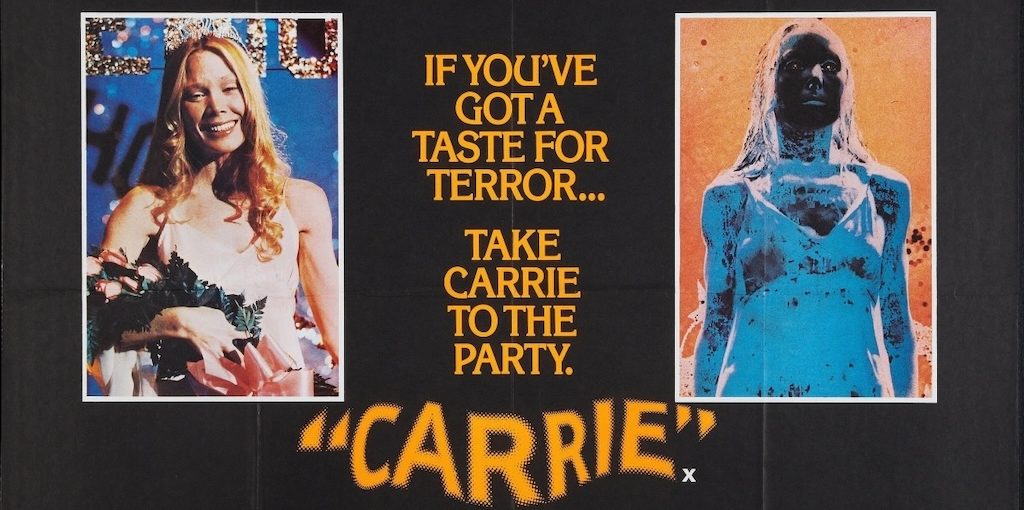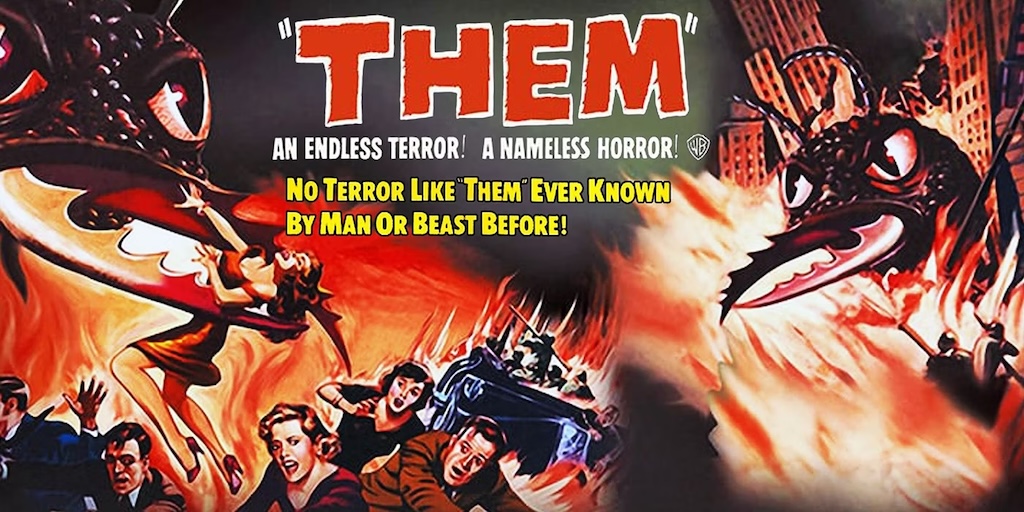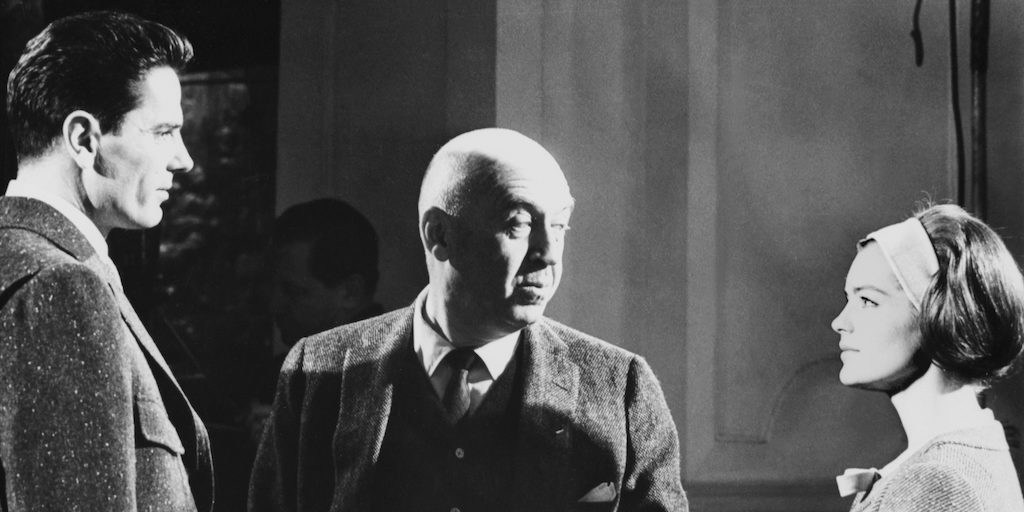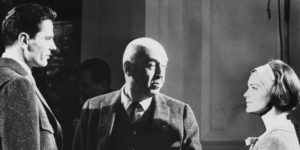I wasn’t supposed to be the one to close this site’s extensive coverage of missions impossible. In fact, I was the one who was least enthusiastic about the corresponding chapter (the first, Brian De Palma’s) and during the week I realized that when I reviewed the film and found it quite unsuccessful, I had stepped on a tiger’s tail, since the film has a mythological status among moviegoers. I also found that you can’t write, as I did, that “Tom Cruise is a pretty bad actor who sometimes sets the tone,” as Cruise has been elevated to demigod height, though less so by the general public (which he takes a bit as a joke) than by his own cinephilia, always ready to repeat gestures of other cinephiles (in this case, “Charlton Heston is an axiome“, a phrase by Michel Mourlet written seventy years ago).
But yesterday my doorbell rang and when I went out to open it in the middle of the rain, a shadow handed me a package with my name on it. When I opened it, I found a small recorder that started to work on its own and from which came a distorted voice that said: “Mr. Quintín, this is your mission if you decide to accept it” and exploded after five seconds. Through the smoke, I noticed that the package also contained a ticket to see Mission: Impossible- Fallout, the newly released sixth installment of the series. And that’s how I went to Cinemark in Palermo, where I saw the film in 3D surrounded by people consuming huge buckets of popcorn. The popcorn thing is not a metaphor or a disdainful allusion: I was truly astonished by the number of consumers and the size of the containers. I finally understood that the ritual of the popcorn is not a complement to the film but an essential part of a type of cinematic experience that Netflix cannot offer.
My review of the first Mission: Impossible was about a halfway movie, and watching the sixth (after forgetting the second and skipping the third, fourth and fifth) I realize that there was indeed a way and the series ended up going through it to consolidate itself in a format that lacks the original contradictions. In that time, Tom Cruise has found in the character of Ethan Hunt and in Mission: Impossible a perfect vehicle for his projects, as well as a director and screenwriter like McQuarrie capable of fixing them, polishing them and giving them splendor, as if it were the Royal Academy of Cruise. This Mission: Impossible is a product of a perfection that is difficult to match, in which Cruise sets the perfect tone and shines as in the best moments I have seen him: Jack Reacher (2012, by McQuarrie himself) and Eyes Wide Shut (1999, by Kubrick), films that, on the other hand, have nothing to do with each other. But it should be noted (and in this I think I grossly underestimated him), that Cruise became more and more clear about the project associated with Mission: Impossible, as well as his film career in general, in which he chose to take risks more than once. I always tended to think with Hitchcock that actors are cattle, but Cruise proved me wrong.
It is Cruise, as producer and actor, who is the decisive factor behind this brilliant sixth part, perfect for fully exploiting his always-on-the-go hero, who runs, jumps, fights, drives, climbs and flies non-stop for two and a half hours. But the association with McQuarrie gives the film an organization that is no less important than the excellence of the action scenes and the masterful use of visual effects. Mission: Impossible – Fallout modifies two constants of popular cinema in recent years. One is that the weight of the digital in the plot is less than that of the mechanical, of the directly physical. Computers are used as a tool, they are not the ones that sustain its fictional world. They are instruments like masks, which continue to appear but are no longer metaphors for anything. In that sense, the film is the opposite of Ready Player One, where the world has mutated into coexisting with the digital ghost of itself. And it is also the opposite of the use of popular culture that Spielberg makes there: now, the viewer does not need his experience as a consumer of movies, series, comics or video games. He is a reborn, naive spectator who has not fallen from paradise. Even just a couple of motifs are taken from the original television series itself (especially Lalo Schiffrin’s indestructible theme song) but without the film needing those references, nor does it need those it inherits from the previous movie plots. This is a way of making films that is not based on self-reference or allusions. If something contradicts this Mission: Impossible, it is the widespread idea that, at this point in its history, cinema should rely on quotes, tribute, parody or pastiche. None of that matters. There is no second degree to pay attention to.
Cruise and McQuarrie’s approach is the opposite of recycling. Although no art product comes out of nowhere, much of the fun of Mission: Impossible – Fallout (by the way, what a lousy title!) comes from its freshness in taking the great themes of the thriller and redoing them. It is clear that Cruise and McQuarrie did not invent feet percussion, motorcycle, car or helicopter chases, nor fist fights, karate chops, stab wounds or shots in claustrophobic or infinitely open spaces, nor do they pretend that an atomic bomb that is original will explode when the countdown ends and the heroes must stop, much less the famous cliffhanger, with the hero and the villain hanging from a cliff. They are themes of the genre, as the pistol duel is of the western. Like jokes, it is not a question of inventing them but of telling them well, without falling into the imitation of previous narrators or the allusion that turns them into ironies for the spectator who becomes an accomplice of them. It is clear that the spectators have seen many similar scenes, but they also know how to distinguish when they are made with freshness and imagination or, on the contrary, are the result of routine or a lazy quote.
In that sense, every action scene in this Mission: Impossible is top notch. And the long sequence of the chase in Paris is unbeatable for two reasons: it is of a capital variety and creativity and, at the same time, one of the most beautiful exhibitions of the French capital that I recall, with the peculiarity of being made to full speed. For the Paris section alone, the film would be memorable.
None of this would be possible without the propulsion that Cruise’s constantly moving body and his dynamism as a producer stamp on the film. But not without the fabulous craftsmanship of the stunt doubles, the special effects teams and the opulence (not ostentatious) of the production in general, which enhances trades that the cinema has taken to an extraordinary development and height and that stop progressing. There are many people behind this film and the excellence of their work is remarkable: the construction of the film is homologous with its content, because teamwork, an important pillar of the old series, is fundamental to the plot here. And just as in the end there are three simultaneous scenes on which the future of humanity depends, the work done simultaneously by different technicians in different cities that ensure the multiplicity and beauty of the scenarios in France, England, New Zealand and Norway can be seen.
Regarding McQuarrie, it is necessary to mention a flawless script, complex and full of fantasy, with a gallery of very well-made characters and impeccable performances. Starting with Cruise himself, who at 56 is negotiating the curve of age with distinction and sobriety until he achieves the best of himself. Even with the presence at his side of a fellow-villain like Henry Cavill, a Terminator who seems twice as big and strong. Or Ving Rhames and Simon Pegg, the likeable sidekicks of the IMF team, a classic mix of comic relief and technological genius.
But there are two factors that organize Mission: Impossible – Fallout, which give it organization and strength as cinematographic fiction. One is the presence of women in key places in the plot. They all look beautiful, they all have great personalities and they make every scene they’re in interesting: Rebecca Ferguson as the English spy, Angela Bassett as the CIA chief, Vanessa Kirby as the White Widow, Michelle Monaghan as former Ethan Hunt’s wife are wonderful and allow everything that happens to be articulated. I would like to name one more woman, Alix Bénézech, who plays a French police officer who accidentally finds herself caught in the crossfire between the good guys and the bad guys. She is also very pretty and the scene in which Cruise asks her in tourist French to leave because her life is in danger is great. But the character is essential because it condenses what the film needs to make itself coherent and distinguish itself from a mere succession of action images: the motto of Ethan Hunt’s character is not to allow innocents to die, even if this seems necessary for the mission. By not accepting collateral damage, the film is inscribed in what is the ethical heart of American cinema: the need for a moral principle to guide its heroes. If Hollywood became important, it was thanks to that organizing principle of its fictions. Ethan Hunt is a character who simultaneously embodies American energy and its ethical-religious sustenance. Perhaps the greatest success of McQuarrie’s staging lies in the way in which he always shows Cruise as small in relation to the difficulty of his task, a willful microbe in the face of the colossal physical space and the obstacles to overcome.
It is true that the film gets confused at the end, because it identifies that ethical side with a political ideology, that of the struggle between the American government embodied in the CIA and the forces of anarchy whose representative is the arch-villain Solomon Lane, clearly inspired in the Unabomber. The line at the end, where Bassett argues that Hunt is the support of humanity because he cares for both the individual and the multitudes, sounds in that context like unnecessary underlining, as if the film were doubting its own viewer or, what is worse, the principle that organizes it would not be taken seriously. For the rest, this is a perfect film, which should serve as a basis to show that cinema does not have to give in to the melancholy that it has begotten.













